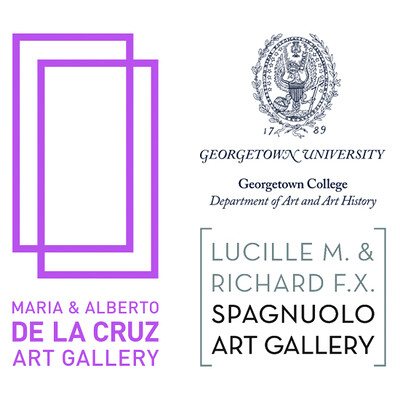January 24–April 7, 2019
3535 Prospect St. NW.
Washington, D.C., 20007
United States
Hours: Wednesday–Saturday 10am–6pm
T +1 202 687 8039
guartgalleries@georgetown.edu
The Maria & Alberto de la Cruz Art Gallery at Georgetown University is pleased to present a special collaboration with one of the most prominent voices in creative discourse today: Glenn Ligon: To be a Negro in this country is really never to be looked at. For the exhibition, on view January 24 through April 7, Ligon (American b. 1960; lives New York City) selected works from some of his best-known series and wrote accompanying labels. The works exemplify Ligon’s engagement with language, examination of the African-American experience, and the influence of his muses, including Andy Warhol (1928–87) and author/social critic James Baldwin (1924–87). A Baldwin quote forms the exhibition’s title and speaks to the show’s central concept, described by Ligon as “the invisibility and simultaneous hypervisibility of black people in America.”
The centerpiece of the exhibition is a group of five never-before-seen grey paintings from Ligon’s celebrated “Hands” series depicting the Million Man March, a large and controversial convening of African American men on the National Mall in 1995. The works are hung on top of a facsimile of Andy Warhol’s rarely shown Washington Monument wallpaper—a privilege granted to few artists. Employing a technique Warhol pioneered, Ligon silkscreened press images of the protesters onto canvas and obscured the background, leaving the figures eerily silent. However, installed on the wallpaper, Ligon’s subjects are thrust back into their original and powerful setting. Ligon writes, “The Million Man March has echoes in early gatherings, such as the silent march against lynching held in June of 1922, or the 1963 March on Washington. I am interested in this recurring, continual need for African Americans to assert our visibility in a country in which we have been crucial presences from the beginning.”
Text-based two-dimensional works form the rest of the exhibition, including a suite of Study for Negro Sunshine drawings quoting Gertrude Stein (1874–1946). These drawings span a decade and culminate in a recent red version, which marks a departure from Ligon’s well-known black and white monochromes. Large photographic prints from the 2016 “Untitled” series record Ligon’s enduring engagement with Baldwin’s seminal 1953 essay “Stranger in the Village.” The prints document the accumulated paint smudges and fingerprints on the artist’s studio copy of the text, which has witnessed the creation of nearly two hundred related artworks over almost 20 years. At the conclusion of that essay ̶which recounts Baldwin’s experience as the only black person in a remote Swiss hamlet ̶the author writes that he is “not, really, a stranger any longer for any American alive.” Ligon observes, “The optimism of this conclusion is at odds with the current state of American politics and civil discourse on the subject.”
Glenn Ligon: To be a Negro in this country is really never to be looked at. will open with a public reception on January 24, from 6 to 8pm. A series of free, multidisciplinary programs ranging from film screenings to public dialogues will expand upon themes of the exhibition; program details are listed on the Gallery’s website.
Like the Ligon exhibition, a new show in the University’s Lucille M. and Richard F. X. Spagnuolo Gallery also seeks to engage viewers and inspire change. Georgie Friedman: Vortex will open January 24 and remain on view through June 2. This Boston-based artist’s immersive and hypnotic video installation Eye of the Storm III will transform the Gallery into a contemplative space with a disquieting undercurrent. Friedman explores humankind’s simultaneous defenselessness and culpability in relation to an array of powerful storms.
Lucille M. and Richard F. X. Spagnuolo Gallery
1221 36th St NW
Washington, DC 20007
Hours: Wednesday–Saturday 10am–6pm, Sunday 1–5pm.
Contact: email us at guartgalleries [at] georgetown.edu, or visit delacruzgallery.georgetown.domains.



